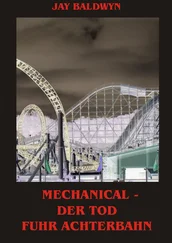The right of Ronald J. Anderson to be identified as the author of this work has been asserted in accordance with law.
Registered Offices John Wiley & Sons, Inc., 111 River Street, Hoboken, NJ 07030, USA John Wiley & Sons Ltd, The Atrium, Southern Gate, Chichester, West Sussex, PO19 8SQ, UK
Editorial Office The Atrium, Southern Gate, Chichester, West Sussex, PO19 8SQ, UK
For details of our global editorial offices, customer services, and more information about Wiley products visit us at www.wiley.com.
Wiley also publishes its books in a variety of electronic formats and by print‐on‐demand. Some content that appears in standard print versions of this book may not be available in other formats.
Limit of Liability/Disclaimer of Warranty In view of ongoing research, equipment modifications, changes in governmental regulations, and the constant flow of information relating to the use of experimental reagents, equipment, and devices, the reader is urged to review and evaluate the information provided in the package insert or instructions for each chemical, piece of equipment, reagent, or device for, among other things, any changes in the instructions or indication of usage and for added warnings and precautions. While the publisher and authors have used their best efforts in preparing this work, they make no representations or warranties with respect to the accuracy or completeness of the contents of this work and specifically disclaim all warranties, including without limitation any implied warranties of merchantability or fitness for a particular purpose. No warranty may be created or extended by sales representatives, written sales materials or promotional statements for this work. The fact that an organization, website, or product is referred to in this work as a citation and/or potential source of further information does not mean that the publisher and authors endorse the information or services the organization, website, or product may provide or recommendations it may make. This work is sold with the understanding that the publisher is not engaged in rendering professional services. The advice and strategies contained herein may not be suitable for your situation. You should consult with a specialist where appropriate. Further, readers should be aware that websites listed in this work may have changed or disappeared between when this work was written and when it is read. Neither the publisher nor authors shall be liable for any loss of profit or any other commercial damages, including but not limited to special, incidental, consequential, or other damages.
Library of Congress Cataloging‐in‐Publication data applied for
HB ISBN: 9781119053651
Cover Design: Wiley
Cover Image: © mammuth/Getty Images
To June
When I first studied vibrations, as an undergraduate student, its importance was clear to our class because it was a required course for mechanical engineers. A few years later, when I started teaching vibrations and new topics were entering the field of mechanical engineering, a course on vibrations was no longer seen as being important enough to be a required so it became an elective. Now, although “mechanical engineering” is still used as an umbrella term, the students who graduate are mechanical engineers with a specialization. Students in the specialized streams do not have time to cover all of the topics that used to be expected of mechanical engineers so some graduate without thermodynamics, others without vibrations, and so on. Specialization like this is inevitable given the expanding scope of knowledge in engineering and the limited time available to undergraduate students but it means even fewer students are learning about vibrations and other important topics. While preparing this introduction to vibrations, I kept in mind the need for undergraduate students to have a better understanding of two topics that are ubiquitous in today's engineering workplace – finite element analysis (FEA) and fast Fourier transforms (FFT). FEA and FFT software tools are readily available to both students and practicing engineers and they need to be used with understanding and a degree of caution.
I was never able to find a textbook that covered just enough, and the right, material for a semester length introductory course in vibrations. I used many textbooks over the years but there was never a fit with what I thought should be in an introduction to vibrations. I was looking for something student‐friendly in that it should be readable, almost conversational, but still be mathematically rigorous. What I found on the market were mainly “reference books” as opposed to “teaching books”. Many of the textbooks I tried are very good at covering, in depth, a broad range of topics in vibrations, but students have difficulty using them as a first text in the subject, mainly because of the overwhelming amount of material presented.
This book grew from my attempt to accomplish two things in a single course in vibrations. The primary goal is, of course, to present the basics of vibrations in a manner that promotes understanding and interest while building a foundation of knowledge in the field. To do this, I have had to give only brief coverage of many important topics with the hope that some students will go on to expand their knowledge in these areas if their interest is piqued. As mentioned earlier, a secondary goal is to give students a good understanding of finite element analysis and Fourier transforms. While these two subjects fit nicely into vibrations, this book presents them in a way that emphasizes understanding of the underlying principles so that students are aware of both the power and the limitations of the methods.
Chapter 1addresses the way in which a student has to think about previous undergraduate dynamics knowledge in order to make the transition to analysis of vibrating systems. It introduces the idea of small motions about a stable equilibrium state and addresses the details of linearization. Lagrange's Equations are introduced here and students take to them very quickly as an alternative to Newton's Laws.
Chapter 2considers the details of analyzing single degree of freedom systems. While much of this material is obvious to those skilled in vibrations, it is vital material for developing the students' abilities. It covers topics such as preloads in springs and why gravitational forces don't need to be included because they are canceled out by the constant preloads. It looks at the constitutive relationship for a spring and shows how to draw free body diagrams consistently and accurately.
Chapter 3is about free vibrations of single degree of freedom systems. It covers systems with and without damping and tries to make sense of what it means to solve a second‐order, linear differential equation without being too prescriptive about it.
Chapter 4looks at time response when applying a harmonic forcing function to an undamped single degree of freedom system, thereby introducing the phenomena of beating and resonance. This is a short chapter although the subject of time response, if presented in detail, could make for a very long one. Time response is an area that I see as being of secondary importance in an introduction to vibrations.
Chapter 5considers steady state forced vibrations, covering harmonic forcing functions, harmonic base motion, systems with a rotating unbalance, and accelerometer design. This is really the essence of vibrational analysis and is covered in detail.
Chapter 6is devoted to the very important subject of damping. Linear viscous damping is discussed and the concept of modeling other energy removal devices as “equivalent linear viscous dampers” is introduced. Coulomb damping is covered. The concept of logarithmic decrement is introduced.
Читать дальше












